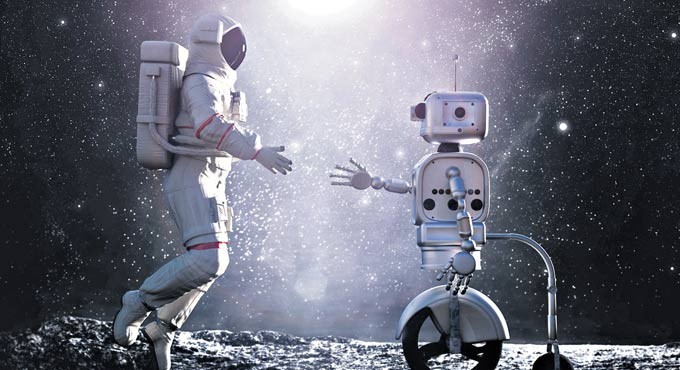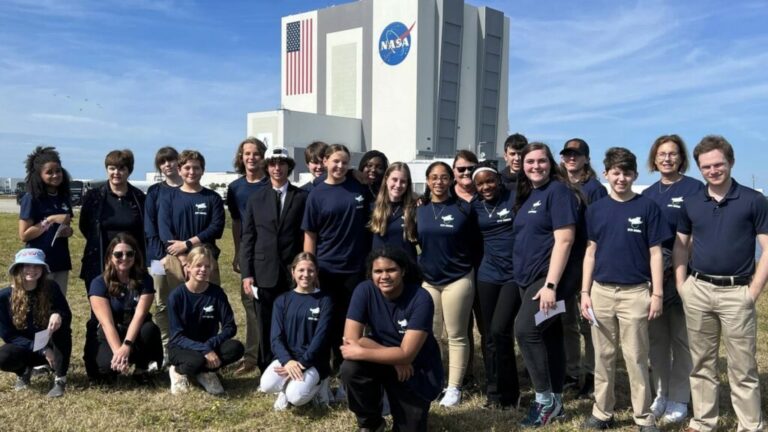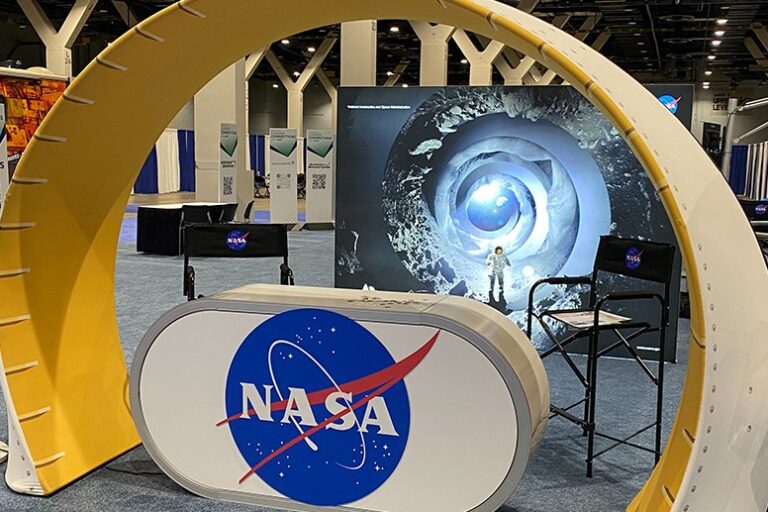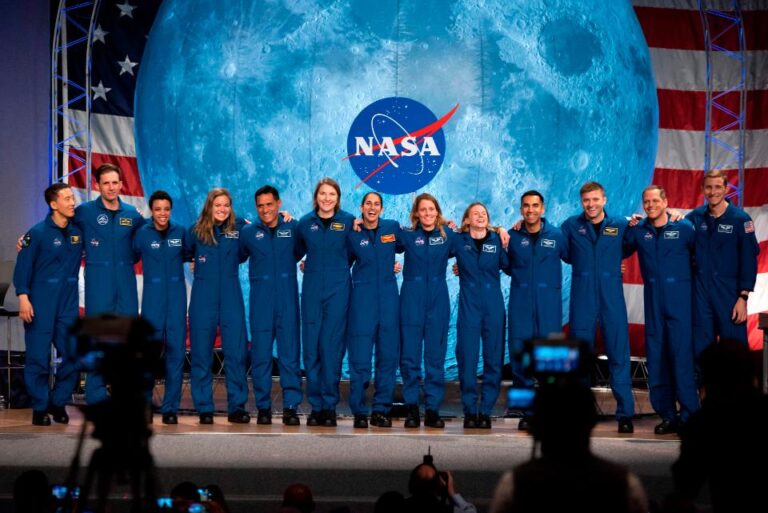
Artemis 2: NASA’s First Crewed Mission Beyond Low Earth Orbit in Over 50 Years
Artemis 2 is a key part of NASA’s ambitious Artemis program, which aims to return humans to the Moon and pave the way for future missions to Mars. Scheduled to launch in 2024, Artemis 2 will be the first crewed mission in the program and will mark humanity’s first return to the lunar vicinity since the Apollo missions in the 1970s. Here’s a detailed overview of what Artemis 2 is designed to accomplish:
1. Mission Overview: Key Goals and Objectives
Artemis 2 is the second flight in NASA’s Artemis program but the first to carry astronauts aboard the Orion spacecraft. Its primary goals are to:
- Test the Orion spacecraft’s life support systems and other critical components in a deep space environment.
- Ensure the safety and readiness of the spacecraft and crew for future lunar landings, particularly Artemis 3, which aims to land astronauts on the Moon.
- Orbit the Moon and return to Earth, testing Orion’s heat shield and reentry systems during a high-speed reentry into Earth’s atmosphere.
Unlike Artemis 1, which was an uncrewed mission launched in November 2022 to test the Space Launch System (SLS) and Orion spacecraft, Artemis 2 will be a more complex mission as it will involve human astronauts.
2. Crew Composition and Roles
Artemis 2 will carry a four-person crew, marking the first time astronauts will travel beyond low Earth orbit since Apollo 17 in 1972. The crew will be composed of:
- Commander: The mission commander will be responsible for leading the crew and ensuring the spacecraft operates smoothly throughout the mission.
- Pilot: The pilot will assist in navigating the spacecraft and conducting necessary system tests.
- Two Mission Specialists: These astronauts will perform experiments and assist with spacecraft systems monitoring.
The exact crew members were announced by NASA in 2023, including astronauts Reid Wiseman, Victor Glover, Christina Koch, and Jeremy Hansen (from the Canadian Space Agency), marking the first time a Canadian astronaut will go beyond Earth’s orbit.
3. Mission Profile: From Earth to the Moon and Back
Artemis 2 will launch aboard NASA’s powerful Space Launch System (SLS), the most powerful rocket ever built. The mission will last approximately 10 days, during which the crew will orbit the Moon and return safely to Earth. Here is a breakdown of the key phases of the mission:
a. Launch and Ascent
- The crew will launch from Kennedy Space Center in Florida, aboard the Orion spacecraft atop the SLS rocket.
- After launch, the SLS will propel Orion into a temporary low Earth orbit, where the crew will perform initial systems checks and ensure everything is operating as expected.
b. Trans-Lunar Injection (TLI)
- Once systems are confirmed to be working, the spacecraft will fire its engines in a trans-lunar injection burn, propelling the crew toward the Moon.
- This maneuver will send the spacecraft on a precise trajectory to the lunar vicinity.
c. Lunar Flyby
- Instead of landing on the Moon, Artemis 2 will perform a free-return trajectory, where the spacecraft will loop around the far side of the Moon and return to Earth. This trajectory will take the crew 7,400 kilometers (4,600 miles) beyond the Moon, giving the astronauts an unparalleled view of both the lunar surface and Earth from space.
- During this flyby, Orion will travel up to 400,000 kilometers (248,500 miles) from Earth, marking the farthest distance humans have traveled from Earth since the Apollo program.
d. Return to Earth
- After completing the lunar flyby, Orion will return to Earth using gravity to assist in its trajectory back.
- Upon reentry, the spacecraft will travel at nearly 40,000 kilometers per hour (24,850 miles per hour), testing Orion’s heat shield under conditions that simulate a return from deep space.
- The spacecraft will splash down in the Pacific Ocean, where recovery teams will be on standby to retrieve the astronauts and spacecraft.
4. Testing Critical Systems for Future Lunar Missions
A major focus of Artemis 2 is testing key technologies and systems that will be essential for future lunar landings and, eventually, crewed missions to Mars. These include:
a. Life Support Systems
Artemis 2 will be the first time Orion’s life support systems are tested with a human crew. The Environmental Control and Life Support System (ECLSS) will regulate temperature, humidity, and carbon dioxide levels inside the spacecraft, ensuring a safe environment for the astronauts. The crew will monitor these systems throughout the mission to identify any potential issues.
b. Orion’s Heat Shield
The spacecraft’s heat shield is a critical component for safely returning astronauts from deep space. During reentry, Orion will encounter extreme temperatures of up to 2,760 degrees Celsius (5,000 degrees Fahrenheit) as it passes through Earth’s atmosphere. Artemis 2 will test the heat shield under these intense conditions to ensure it can protect the crew on future missions, including Artemis 3.
c. Communication and Navigation Systems
Artemis 2 will test Orion’s communication systems, particularly its ability to maintain contact with Earth over vast distances, even when on the far side of the Moon. Additionally, the spacecraft’s advanced navigation systems will be tested to ensure accurate trajectory calculations during both the lunar flyby and return to Earth.
5. Scientific and Operational Objectives
While Artemis 2’s main focus is testing systems for future missions, the crew will also conduct several scientific and operational tasks, including:
- Photography and Visual Data: The crew will take detailed images and video of the Moon’s surface during the flyby, capturing views that haven’t been seen since Apollo.
- Radiation Monitoring: Given the increased exposure to cosmic and solar radiation in deep space, the mission will monitor radiation levels to understand how to protect astronauts on longer missions, such as those to Mars.
- Training for Artemis 3: By performing operations in a deep-space environment, the crew will gain invaluable experience that will inform procedures and safety measures for the first lunar landing of the Artemis program.
6. Significance of Artemis 2
Artemis 2 represents a monumental step forward in human space exploration for several reasons:
- It marks the first time in over 50 years that humans will travel beyond low Earth orbit, reaffirming NASA’s commitment to deep-space exploration.
- The mission serves as a critical stepping stone for Artemis 3, which aims to land astronauts, including the first woman and the first person of color, on the Moon in 2025.
- The data and experience gathered during Artemis 2 will inform not only lunar exploration but also future missions to Mars. Artemis is seen as a precursor to developing the technology, systems, and operational strategies needed for longer-duration missions to other planets.
Conclusion: A New Era in Human Space Exploration
Artemis 2 is more than just a mission to orbit the Moon—it’s a crucial milestone on humanity’s journey back to the lunar surface and beyond. By testing the Orion spacecraft with a human crew and conducting a lunar flyby, NASA will gain critical insights into spacecraft performance, life support systems, and deep-space navigation. The successful completion of Artemis 2 will set the stage for the more ambitious goal of landing humans on the Moon and eventually preparing for crew missions to Mars, ushering in a new era of exploration and discovery.







